
HOW TO INSTALL HARDWOOD PLANKS
OWNER/INSTALLER RESPONSIBILITY
Beautiful hardwood flooring is a natural product and therefore, not perfect. Our flooring
is manufactured in accordance with accepted industry standards which permit a defect
tolerance not to exceed 5%. The defects maybe natural or that of the manufacturing.
Prior to installation of any hardwood flooring product, the installer must determine that
the job-site environment and the sub surfaces involved, meet or exceed all
requirements as stipulated in installations instructions. The hardwood declines any
responsibility for job failure resulting from or associated with sub surface of job-site
environment deficiencies. The installer/owner has final inspection responsibility as to
grade, manufacture and factory finish. He must use reasonable selectivity and hold out
or cut off pieces with glaring defects whatever the cause. Use of stain or filler or putty
stick for defect correction during installation should be accepted as normal procedure.
When hardwood flooring is ordered, 5% must be added to the actual square footage for
tolerated defects and the waste due to the cuts. Should an individual piece be doubtful
as to grade, manufacture or factory finish, the installer should not use the piece.
ONCE INSTALLATION HAS BEEN COMPLETED, ANY INQUIRY FOR COMPLAINTS
WILL AUTOMATICALLY BE REJECTED BY THE MANUFACTURER.
Tools Required: Power Nailer, Claw Hammer, Nail Punch, Mallet, 7 or 8D Nails, Tape
Measure, Mitre Saw and/or Circular Saw and/or Handsaw, Chalk line, Wax Stick.
PREPARING THE SURFACE
1. Open the package and leave the boards in the room for 72 hours.
2. Clean the surface and make sure it is dry.
3. lnstall the boards on a code approved subfloor.
4. If you are installing the boards directly over a wood or slat surface, sand rough areas
and nail.
5. If installing over old flooring, lay the new planks perpendicular to the old planks.
6. To install it in the same direction, cover old flooring with the plywood and secure it
with 7D nails.
SUBFLOOR REQUIREMENTS (including O.S.B.)
NOTE: Do not install over radiant heating.
3/4" (19 mm) solid strip and plank are for nail-down installation only. It requires a
plywood or O.S.B. subfloor over joists. Do not nail over particleboard or products of a
similar nature as you will void your warranty. If you already have a particleboard
subfloor, you must install a minimum of 5/8" (16 mm) thick plywood or O.S.B. subfloor
before installing your hardwood floor.
In order for your warranty to be valid, it requires the following guidelines:

• A minimum of 5/8" (16 mm) subfloor - CDX plywood or 3/4" (19 mm) subfloors - CDX
plywood or approved/stamped O.S.B. underlayment.
• 5/8"(16 mm) CDX plywood can be used for up to 16" (40.64 cm) centers.
• 3/4" (19 mm) CDX plywood or approved/stamped O.S.B. underlayment can be used
for up to 19" (48.26 cm) centers.
NOTE: O.S.B. and plywood subfloors can only be used at 90 degrees to the joists.
• Using an approved moisture meter, measure the moisture content (M.C.) in the
subfloor (plywood); it should be between 6% and 12%. If the moisture content exceeds
12%, turn up the heat and open the basement windows 1/2" (1.25 cm) (dry air). lf the
moisture content is higher than the recommended level, the use of a dehumidifier is
standard procedure and works well. If the moisture content is below the recommended
level, use a humidifier.
• Also, measure the moisture content (M.C.) of the hardwood to be installed. For
hardwood under 3" width, the subfloor and the hardwood must be under a 4% maximum
difference. For hardwood over 3" width, the subfloor and the hardwood must be under a
2% maximum.
DISTRIBUTING THE BOARDS
1. Choose your boards so that the shades create a uniform pattern.
2. Use boards alternatively from different boxes to ensure good color and shade
mixture.
3. Use boards with minor flaws for cutting.
4. Install board’s perpendicular to the joists.
MEASURING
1. Trace a line 3/4" of an inch from the wall using the chalk line.
2. Leave a 3/4" expansion space along all walls. The baseboard and quarter-round will
conceal it.
INSTALLING THE FIRST ROW OF BOARDS
1. Install the first board with the groove edge facing the wall and the tongue edge along
the line.
2. Nail the board from the top, 1/4" from the edge closest to the wall.
3. Nail every 12 inches, leaving 3 inches at each end.
4. Drive nails into the board with the nail punch, using the wax stick to conceal the
holes.
5. Secure the tongue side by driving in finishing nails at a 45 degree angle.
6. Cut the last board of the first row, leaving 3/4" distance between the wall and the tip.
INSTALLING THE SECOND AND SUBSEQUENT ROWS
1. Start the second row by selecting a board that is at least 6 inches longer or shorter
than the neighboring one.
2. Repeat the process with all other boards.
3. Install them by inserting the groove into the tongue.
4. Secure the tongue side by driving in finishing nails at a 45 degree angle.
INSTALLING THE LAST ROW
1. Cut the boards leaving a 3 1/4" expansion space.
2. Nail the board from the top, 1/4" from the edge closest to the wall.
3. Nail every 12 inches, leaving 3 inches at each end.
4. Drive nails into the board with the nail punch, using the wax stick to conceal the
holes.
FINISHING

1. Install the baseboards using finishing nails.
2. Conceal the holes using a wax stick in a shade matching the wood.
INSTALLERS, PROVIDE YOUR CLIENTS WITH THE FOLLOWING INFORMATION:
Maintain humidity levels between 35% and 55% as the dimensions of wood can vary
with the seasons and humidity. To protect your floors and enjoy long-term satisfaction, it
is recommended that a humidifier be used during the cold season when wood and
electrical heating tend to make the air overly dry.
Wood being a natural product, it is important to note that it changes color overtime due
to oxidation and exposure to light. Some species darken in color over time, while others
lighten. Some color change is to be expected for all species and a drastic change can
be expected for some. There are no set values for color fastness on any wood. Should
an individual piece be doubtful as to grade, manufacture or factory finish, the installer
should not use the piece.
Wood flooring has to be acclimatized, all packaging and strapping removed, in room
conditions 72 hours before installation. Conditions of humidity and temperature have to
be always conforming to NWFA standards or more. Subfloor has to conform to NWFA
standards or more. All painting, plasterboard and other humidity sources works has to
be terminated and dried before wood enter the room and installed. All other best
practices have to be followed.
Since hardwood is a natural product, and even if your hardwood floor is well installed,
your hardwood floor will continue to shrink or expand depending on seasons and
humidity/heating conditions. The little spaces between the strips/planks are normal and
not covered by this warranty.
Because wood is a natural, living material that reacts to the surrounding environment, it
is possible that certain factors (e.g. unusual humidity levels, improper installation,
improper handling, a lack of acclimatization, etc.) may cause cracks and/or splits to
appear in certain strips/planks of your floor.
Boards with cracks and/or splits must be visible during installation and must be put
aside for replacement for warranty coverage to apply.
*Once boards are installed, warranty coverage is no longer applicable because cracks
and/or splits may result from various external factors out of the manufacturer’s control.
Note: If over 5% industry standards.
WARRANTY
The warranty protects you from manufacturing defects (improper milling, grading, etc.)
other than staining and coating as long as you own your home. Damages due to
improper transportation, storage, moisture, installation or any other cause are not
covered. Whenever this warranty is applicable to replacing the material only in excess
of 5% of total surface, excluding all other costs, such as transportation, installation,
storage, cutting allowance, etc. The warranty does not cover indentations, scratches or
damages caused by negligence, water, stains, abuse, accidents, extreme
environmental conditions, improper maintenance, insufficient protection and failure to
follow manufacturer’s installation instructions. The warranty covers the finish for 25
years (aluminum oxide finish) under normal residential traffic conditions.
-
 1
1
-
 2
2
-
 3
3
MONO SERRA HD-7024-S Installation guide
- Type
- Installation guide
Ask a question and I''ll find the answer in the document
Finding information in a document is now easier with AI
Related papers
Other documents
-
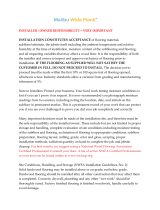 Malibu Wide Plank HDMSSTG476SFP Installation guide
Malibu Wide Plank HDMSSTG476SFP Installation guide
-
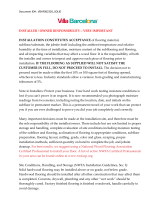 Malibu Wide Plank HDMCSS839SF Installation guide
Malibu Wide Plank HDMCSS839SF Installation guide
-
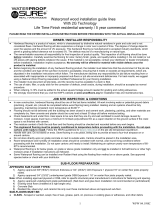 Sure 13S5CWO7D119WG User manual
Sure 13S5CWO7D119WG User manual
-
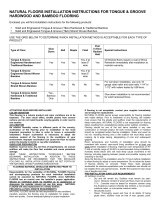 natural floors 70LLPRO14 Installation guide
natural floors 70LLPRO14 Installation guide
-
Mohawk LWCSS467 Installation guide
-
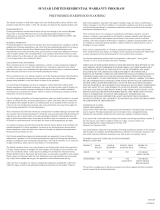 Blue Ridge Hardwood Flooring 20380 Installation guide
Blue Ridge Hardwood Flooring 20380 Installation guide
-
Mohawk LSO23-62 Installation guide
-
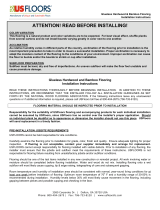 natural floors 609LS Installation guide
natural floors 609LS Installation guide
-
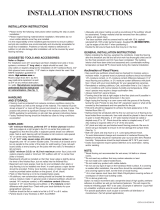 Blue Ridge Hardwood Flooring 22126 Installation guide
Blue Ridge Hardwood Flooring 22126 Installation guide
-
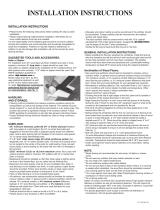 Blue Ridge Hardwood Flooring 20473 Installation guide
Blue Ridge Hardwood Flooring 20473 Installation guide











